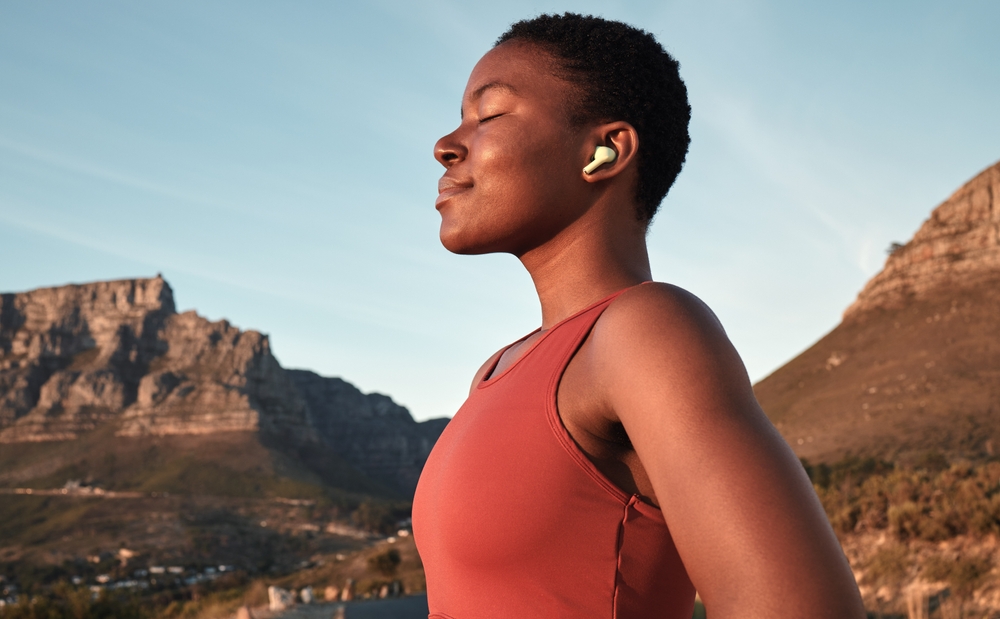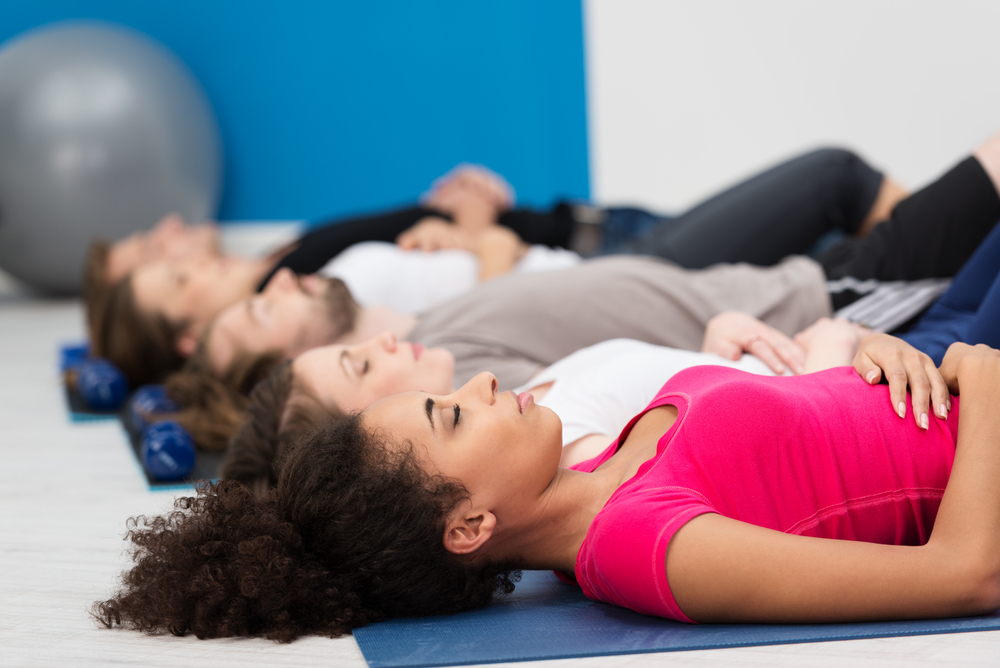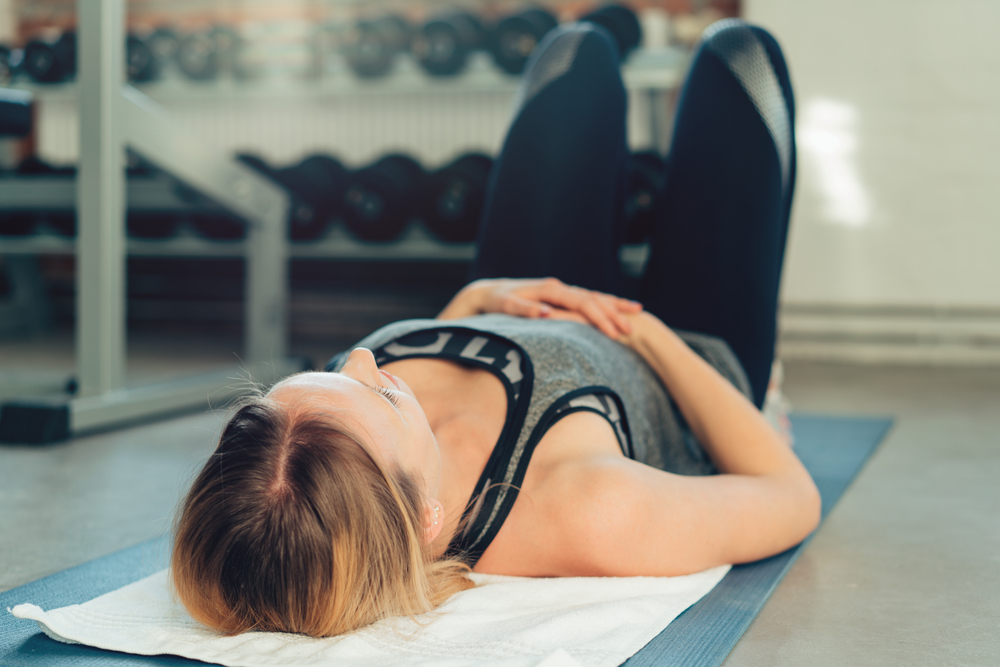Yogis have been preaching about deep breaths for years, and this recent study finally backs them up. However, most people are already aware of the positive effects of taking a deep breath when they feel angry, scared, or frustrated. Breathing helps center and calm a person, and brings the situation into perspective. This new research finds out why.
A Little About Breathing

Breathing is a unique process that is as automatic as a heartbeat, yet it can also be controlled consciously like moving a limb. The automatic part is obvious. The body needs a constant flow of oxygen to stay alive. Even five minutes without oxygen can cause brain cells to die. [1] The conscious part needs a little more explanation: What’s the point of taking conscious breaths?
Breathing Changes The Brain

Researchers used recordings of the brains of people undergoing neurosurgery in their study, and they found that changes in breath — like changing the pace of breathing or drawing more attention to it — engaged different areas of the brain. People have the unique ability to control their brains by regulating their emotions, repressing thoughts, and staying awake when tired. These actions are generally not found in the animal kingdom, yet they are things humans do without thinking. In this category falls breathing. Animals do not purposely change their breathing pattern; it shifts naturally as they run or rest.
Yet humans can change their breathing patterns at will.

Many therapies like cognitive behavioral therapy and trauma therapy, and activities like yoga and meditation, take advantage of this human ability to positively influence behavior. Those who have partaken in these exercises probably found them helpful but may not be able to explain why. Fortunately, science can, and understanding their findings can bring a person to greater focus, calmness, and emotional regulation. [2]
The Study

Post-doctoral researcher Dr. Jose Herrero worked with Neurologist Dr. Ashesh Mehta to solve this mystery. They began their research by observing people’s brain activity when they breathed normally. Then the subjects were sat in front of a computer and told to press a button whenever a circle appeared on the screen. This task distracted them so Dr. Herrero could observe their brain patterns when they breathed unconsciously. The third trial involved the subjects consciously increasing the pace of their breathing and counting each breath. The researchers found that as the participants changed their breathing through these three exercises, their brains did as well.
In other words, conscious breathing activates different parts of the brain. [3]

The most unique part of this study was that the researchers did not rely on imaging techniques that infer their participants’ neural activity. They used patients who suffered from epilepsy and had electrodes implanted in their brains for clinical treatment. (Their seizures couldn’t be contained by medicine so they needed surgical intervention to monitor their brain activity to determine the onset of a seizure.) This allowed the researchers to directly observe the brains of awake people as they breathed consciously and automatically.
Breathing is a Tool

As said, this study reinforces what people already knew, that breathing is a powerful tool to lower one’s stress levels and increase concentration. Forget yogis, even athletes have utilized their breath to better their performance. [4] The most common breathing technique used in meditation is diaphragmatic breathing, also called “belly breathing.”
This breath comes with a host of benefits, including:

- Helping to manage the symptoms of IBS, depression, anxiety, and insomnia
- Lowers blood pressure
- Reduces the negative effects of cortisol (a stress hormone) in the body
- Reduces stress [5]
Many people use only the upper region of their lungs, which results in shallow breaths that are far from therapeutic; that’s the region used for hyperventilating. People who practice yoga, take voice lessons, or play a wind instrument may be familiar with abdominal breathing.
Here’s a simple way to bring your breath into your belly:

- Sit or lie down and place one hand over your chest and one over your belly.
- Take a deep breath and notice which hand is lifted. If the chest hand lifts, you are taking shallow breaths.
- Relax your muscles, especially in your shoulders and abdominal area, and breathe deeply again, this time drawing your breath lower. Imagine you filling your belly with air like a balloon, and try to lift that hand using only your breath.
- For the next breath, try to only lift the hand over your abdominals and keep the hand over your chest unmoved. Take a deep breath slowly through the nose, hold the breath for a moment, then exhale slowly and steadily.
- Practice this breath until it feels natural and therapeutic. It may take some time, so be patient with yourself.
Repeat this exercise as often as you’d like.

Bring it into your routine, such as taking several minutes soon after waking up and before going to bed, in a quiet and relaxing place. Clear your mind of stressful thoughts and concentrate on the breath and the sounds in the present environment (this can be surprisingly difficult but is very doable with practice.) Bringing diaphragmatic breaths into your routine already provides a slew of benefits, but the best one is having it as a tool you can use whenever you need it. The boss just dropped a stack of papers on your desk that has to be completed by the end of the day. You’re walking into a job interview for a position you really want? You can’t sleep because you’re worried about tomorrow’s flight? Breath is there to help ease the stress, and it’s free and always available.
- Kim Ann Zimmermann Respiratory System: Our Avenue for Gas Exchange. Live Science. https://www.livescience.com/22616-respiratory-system.html August 23, 2019
- Moran Cerf. Neuroscientists have identified how exactly a deep breath changes your mind. Quartz. https://qz.com/quartzy/1132986/neuroscientists-have-identified-how-exactly-a-deep-breath-changes-your-mind/ November 19, 2017
- Jose L. Herrero, Simon Khuvis, Erin Yeagle, Moran Cerf, and Ashesh D. Mehta. Breathing above the brain stem: volitional control and attentional modulation in humans. Journal of Neurophysiology. https://www.physiology.org/doi/full/10.1152/jn.00551.2017 January 3, 2018
- David Shearer. How controlled breathing helps elite athletes – and you can benefit from it too. The Conversation. https://theconversation.com/how-controlled-breathing-helps-elite-athletes-and-you-can-benefit-from-it-too-128072 December 5, 2019
- Tim Jewell. What Is Diaphragmatic Breathing? Healthline. https://www.healthline.com/health/diaphragmatic-breathing#takeaway September 25, 2018

